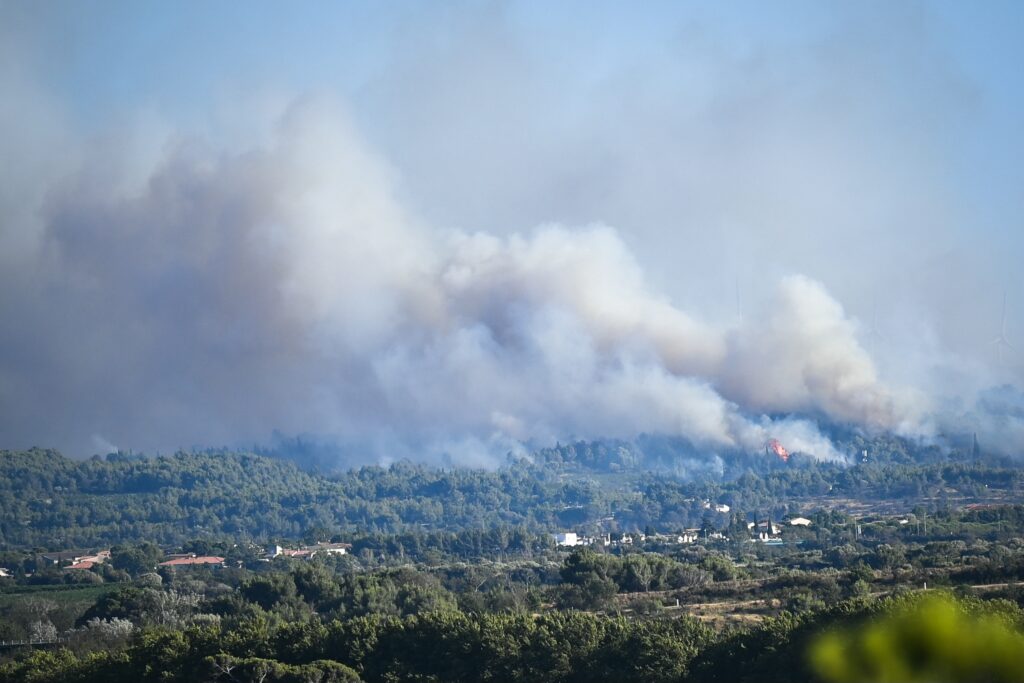Foot: Arsenal met la main sur le prolifique attaquant suédois Viktor Gyökeres
Le prolifique avant-centre suédois Viktor Gyökeres s’est engagé avec Arsenal, a annoncé samedi le club londonien, pour une indemnité de transfert, bonus compris, de 76 millions d’euros.Agé de 27 ans, Gyökeres jouait ces deux dernières saisons au Sporting de Lisbonne, où il a inscrit 97 buts en 102 apparitions, souligne Arsenal dans un communiqué.Avec ses 54 buts toutes compétitions confondues inscrits la saison écoulée, il a été le dauphin de Kylian Mbappé au classement du Soulier d’Or européen, devançant l’Egyptien de Liverpool Mohamed Salah.”Je suis à la table des meilleurs attaquants du monde”, assurait le Suédois dans un entretien accordé au début du mois au quotidien français L’Equipe, quant il était encore lié au Sporting par une clause de sortie de 100 millions d’euros.En sélection, ses statistiques sont du même acabit, avec 12 buts lors de ses 17 dernières sélections.L’automne dernier, il a marqué tous les esprits en s’offrant un triplé face au Manchester City de Pep Guardiola lors de la victoire 4-1 des Portugais en Ligue des champions. Deux semaines plus tard, en sélection cette fois, il en plantait quatre contre l’Azerbaïdjan en Ligue des nations (6-0).”Nous sommes absolument ravis d’accueillir Viktor Gyökeres au club. La constance qu’il a montrée dans ses performances et sa disponibilité sont remarquables, et ses contributions en termes de buts parlent d’elles-mêmes”, s’est réjoui le manager des Gunners, Mikel Arteta, cité par son club.Dans un communiqué, le Sporting a précisé les conditions financières de ce transfert: 76 millions d’euros (65,8 de part fixe et un peu plus de dix millions de bonus liés à différents objectifs concernant les performances sportives du joueur et de son nouveau club).L’international suédois est la sixième recrue estivale d’Arsenal, possiblement la dernière, après le défenseur Cristhian Mosquera, les milieux de terrain Martin Zubimendi et Christian Norgaard, le gardien Kepa Arrizabalaga et l’attaquant Noni Madueke.- Dimension physique et intelligence de jeu -Deuxième de Premier League ces trois dernières saisons, en quête depuis plus de vingt ans d’un nouveau titre de champion d’Angleterre, Arsenal a dépensé aux alentours de 200 millions de livres (230 millions d’euros) depuis l’ouverture du mercato pour se renforcer.Gyökeres devrait rejoindre ses nouveaux partenaires lors de la tournée asiatique d’avant-saison au programme des Gunners à Singapour et Hong Kong.Né à Stockholm d’origine hongroise, il connaît déjà le football anglais pour avoir évolué à Brighton, qu’il a rejoint en janvier 2018 à l’âge de 19 ans avant une série de prêts (Sankt-Pauli en Allemagne, Swansea et Coventry en deuxième division anglaise).Transféré à Coventry, il avait échoué de peu à aider les Sky Blues à remonter en Premier League à l’issue de la saison 2022-2023 avant de signer contre 24 millions d’euros avec le Sporting Lisbonne, où il a été l’un des grands artisans des deux titres de champion national consécutifs remportés par le club lisboète, assorti au printemps dernier par un doublé championnat-Coupe du Portugal.Puissant, athlétique et d’une adresse diabolique dans la surface, Gyökeres (1,87m) fait tourner la tête des grands d’Europe depuis des mois, et c’est Arsenal qui a emporté le morceau.A Londres, dont le dernier titre remonte à la FA Cup remportée en 2020, il va renforcer la ligne d’attaque d’un club qui a souffert la saison passée des absences longue durée de Gabriel Jesus et de Kai Havertz et joue depuis plusieurs saisons sans buteur de ce calibre.”Viktor est un talent exceptionnel et a constamment démontré qu’il possède les qualités et la mentalité de gagnant nécessaire à un avant centre de top niveau”, a souligné le directeur sportif d’Arsenal, Andrea Berta. “Sa dimension physique, son intelligence et son éthique de travail se marient parfaitement à notre vision.”
Over 600 malnourished children die in six months in Nigeria: MSFSat, 26 Jul 2025 19:13:15 GMT
More than 600 malnourished children have died in northern Nigeria in six months after failing to receive proper care as foreign aid dries up, a medical charity has said.Doctors Without Borders (MSF) said northern Nigeria, which already is struggling with insurgency and banditry, is “currently facing an alarming malnutrition crisis.”In the first half of 2025, its …
Les affrontements entre Cambodge et Thaïlande font 33 morts, les parties prêtes à se rencontrer selon Trump
Les combats frontaliers entre le Cambodge et la Thaïlande ont fait 33 morts de part et d’autre de la frontière, selon les derniers bilans disponibles samedi, mais les belligérants sont prêts à se rencontrer en vue d’un cessez-le-feu selon le président américain Donald Trump.Ce différend frontalier couve de longue date et a dégénéré jeudi en affrontements impliquant des avions de combat, des chars, des troupes au sol et l’artillerie. Un niveau de violence jamais vu depuis 2011, qui a conduit le Conseil de sécurité de l’ONU à se réunir d’urgence.Samedi, le ministère de la Défense à Phnom Penh a affirmé que 13 personnes avaient été tuées et 71 autres blessées du côté cambodgien. La Thaïlande dénombre quant à elle 20 morts sur son sol, parmi lesquels six soldats.Donald Trump a annoncé samedi, après avoir échangé avec leurs dirigeants, que les deux pays étaient prêts à se rencontrer pour parvenir à un cessez-le-feu.”Ils ont convenu de se rencontrer immédiatement et de trouver rapidement un accord de cessez-le-feu”, a écrit le président américain sur son réseau Truth Social.Donald Trump, qui se trouve en Ecosse, a salué deux “très bonnes conversations” et dit espérer que les deux voisins “s’entendront pendant encore de nombreuses années”.Dans un post publié plus tôt, Donald Trump avait assuré que “la Thaïlande, comme le Cambodge, veut un cessez-le-feu immédiat et la PAIX”.- Tirs d’artillerie -Au total, le bilan dépasse celui de la précédente série d’affrontements frontaliers majeurs entre les deux pays, qui avaient fait 28 morts entre 2008 et 2011.Les heurts ont éclaté au niveau de temples vieux de plusieurs siècles, avant que les combats ne se propagent le long de la frontière, une ligne de crête de collines recouvertes d’arbres, entourées de jungle et de cultures de caoutchouc, de riz et d’ail.Les deux camps ont signalé des combats vers 05H00 (22H00 GMT vendredi) sur la côte. Phnom Penh a accusé les forces thaïlandaises d’avoir tiré “cinq obus d’artillerie lourde” en plusieurs endroits dans la province de Pursat, frontalière de la Thaïlande.Des journalistes de l’AFP présents dans la ville cambodgienne de Samraong, près de la frontière, ont entendu des tirs d’artillerie samedi.Un villageois thaïlandais réfugié à l’intérieur d’un abri joint au téléphone dans la province de Sisaket, à quelque 10 km de la frontière, a lui aussi évoqué le grondement des canons.”Je veux juste que cela se termine le plus rapidement possible”, a déclaré Sutian Phiewchan à l’AFP.Les affrontements ont contraint plus de 138.000 personnes à évacuer les régions thaïlandaises adossées à la frontière, tandis qu’au Cambodge, plus de 35.000 personnes ont dû fuir leur domicile.A l’issue de la réunion du Conseil de sécurité de l’ONU vendredi à New York, l’ambassadeur cambodgien aux Nations unies, Chhea Keo, a fait savoir que son pays souhaitait un cessez-le-feu.”Le Cambodge a demandé un cessez-le-feu immédiat, inconditionnel et nous avons également appelé à un règlement pacifique du conflit”, a-t-il dit à la presse.- Différend frontalier -Le ministre thaïlandais des Affaires étrangères Maris Sangiamposa a appelé samedi le Cambodge à faire preuve d’une “véritable sincérité pour mettre fin au conflit”.”J’exhorte le Cambodge à cesser de violer la souveraineté thaïlandaise” et à se tourner vers le “dialogue bipartite”, a dit le ministre à la presse.Vendredi, avant la réunion aux Nations unies, la Thaïlande avait dit laisser la porte ouverte à des négociations, avec la Malaisie comme possible intermédiaire.Ce dernier pays préside l’Association des nations de l’Asie du Sud-Est (Asean), dont la Thaïlande et le Cambodge sont membres.L’ancien Premier ministre thaïlandais Thaksin Shinawatra, une personnalité influente dans le royaume, s’est rendu samedi dans plusieurs abris pour y rencontrer des personnes évacuées.”L’armée a besoin d’achever ses opérations avant que tout dialogue ne puisse avoir lieu”, a lancé M. Thaksin devant la presse.Ces combats constituent une escalade majeure dans le conflit entre le Cambodge et la Thaïlande au sujet de leur frontière commune de 800 kilomètres. Les deux Etats contestent son tracé, défini à l’époque de l’Indochine française.Une décision de la Cour internationale de justice des Nations unies en 2013 a réglé le problème pendant plus d’une décennie mais la crise actuelle a éclaté en mai lorsqu’un soldat cambodgien a été tué au cours d’un échange nocturne de tirs dans la zone dite du “Triangle d’émeraude”.Les relations entre Bangkok et Phnom Penh se sont particulièrement détériorées le mois dernier lorsque l’ancien Premier ministre cambodgien Hun Sen a diffusé l’enregistrement de propos tenus par la cheffe du gouvernement thaïlandais d’alors, Paetongtarn Shinawatra, au sujet du différend frontalier.burx-pdw/jnd/bds/ial/liu
Les affrontements entre Cambodge et Thaïlande font 33 morts, les parties prêtes à se rencontrer selon Trump
Les combats frontaliers entre le Cambodge et la Thaïlande ont fait 33 morts de part et d’autre de la frontière, selon les derniers bilans disponibles samedi, mais les belligérants sont prêts à se rencontrer en vue d’un cessez-le-feu selon le président américain Donald Trump.Ce différend frontalier couve de longue date et a dégénéré jeudi en affrontements impliquant des avions de combat, des chars, des troupes au sol et l’artillerie. Un niveau de violence jamais vu depuis 2011, qui a conduit le Conseil de sécurité de l’ONU à se réunir d’urgence.Samedi, le ministère de la Défense à Phnom Penh a affirmé que 13 personnes avaient été tuées et 71 autres blessées du côté cambodgien. La Thaïlande dénombre quant à elle 20 morts sur son sol, parmi lesquels six soldats.Donald Trump a annoncé samedi, après avoir échangé avec leurs dirigeants, que les deux pays étaient prêts à se rencontrer pour parvenir à un cessez-le-feu.”Ils ont convenu de se rencontrer immédiatement et de trouver rapidement un accord de cessez-le-feu”, a écrit le président américain sur son réseau Truth Social.Donald Trump, qui se trouve en Ecosse, a salué deux “très bonnes conversations” et dit espérer que les deux voisins “s’entendront pendant encore de nombreuses années”.Dans un post publié plus tôt, Donald Trump avait assuré que “la Thaïlande, comme le Cambodge, veut un cessez-le-feu immédiat et la PAIX”.- Tirs d’artillerie -Au total, le bilan dépasse celui de la précédente série d’affrontements frontaliers majeurs entre les deux pays, qui avaient fait 28 morts entre 2008 et 2011.Les heurts ont éclaté au niveau de temples vieux de plusieurs siècles, avant que les combats ne se propagent le long de la frontière, une ligne de crête de collines recouvertes d’arbres, entourées de jungle et de cultures de caoutchouc, de riz et d’ail.Les deux camps ont signalé des combats vers 05H00 (22H00 GMT vendredi) sur la côte. Phnom Penh a accusé les forces thaïlandaises d’avoir tiré “cinq obus d’artillerie lourde” en plusieurs endroits dans la province de Pursat, frontalière de la Thaïlande.Des journalistes de l’AFP présents dans la ville cambodgienne de Samraong, près de la frontière, ont entendu des tirs d’artillerie samedi.Un villageois thaïlandais réfugié à l’intérieur d’un abri joint au téléphone dans la province de Sisaket, à quelque 10 km de la frontière, a lui aussi évoqué le grondement des canons.”Je veux juste que cela se termine le plus rapidement possible”, a déclaré Sutian Phiewchan à l’AFP.Les affrontements ont contraint plus de 138.000 personnes à évacuer les régions thaïlandaises adossées à la frontière, tandis qu’au Cambodge, plus de 35.000 personnes ont dû fuir leur domicile.A l’issue de la réunion du Conseil de sécurité de l’ONU vendredi à New York, l’ambassadeur cambodgien aux Nations unies, Chhea Keo, a fait savoir que son pays souhaitait un cessez-le-feu.”Le Cambodge a demandé un cessez-le-feu immédiat, inconditionnel et nous avons également appelé à un règlement pacifique du conflit”, a-t-il dit à la presse.- Différend frontalier -Le ministre thaïlandais des Affaires étrangères Maris Sangiamposa a appelé samedi le Cambodge à faire preuve d’une “véritable sincérité pour mettre fin au conflit”.”J’exhorte le Cambodge à cesser de violer la souveraineté thaïlandaise” et à se tourner vers le “dialogue bipartite”, a dit le ministre à la presse.Vendredi, avant la réunion aux Nations unies, la Thaïlande avait dit laisser la porte ouverte à des négociations, avec la Malaisie comme possible intermédiaire.Ce dernier pays préside l’Association des nations de l’Asie du Sud-Est (Asean), dont la Thaïlande et le Cambodge sont membres.L’ancien Premier ministre thaïlandais Thaksin Shinawatra, une personnalité influente dans le royaume, s’est rendu samedi dans plusieurs abris pour y rencontrer des personnes évacuées.”L’armée a besoin d’achever ses opérations avant que tout dialogue ne puisse avoir lieu”, a lancé M. Thaksin devant la presse.Ces combats constituent une escalade majeure dans le conflit entre le Cambodge et la Thaïlande au sujet de leur frontière commune de 800 kilomètres. Les deux Etats contestent son tracé, défini à l’époque de l’Indochine française.Une décision de la Cour internationale de justice des Nations unies en 2013 a réglé le problème pendant plus d’une décennie mais la crise actuelle a éclaté en mai lorsqu’un soldat cambodgien a été tué au cours d’un échange nocturne de tirs dans la zone dite du “Triangle d’émeraude”.Les relations entre Bangkok et Phnom Penh se sont particulièrement détériorées le mois dernier lorsque l’ancien Premier ministre cambodgien Hun Sen a diffusé l’enregistrement de propos tenus par la cheffe du gouvernement thaïlandais d’alors, Paetongtarn Shinawatra, au sujet du différend frontalier.burx-pdw/jnd/bds/ial/liu
Un incendie parcourt 600 hectares dans un secteur touristique de l’Aude
Attisé par un vent fort, un incendie qui s’est déclaré à Sigean (Aude), samedi en début d’après-midi, a parcouru 600 hectares et ses flammes ont endommagé deux habitations, avant de se diriger vers Port-la-Nouvelle, un secteur touristique du littoral méditerranéen où deux campings et un lotissement ont été évacués, a indiqué le sous-préfet de l’Aude à l’AFP.De hautes flammes étaient visibles de loin, survolées par six canadairs, tandis qu’une épaisse fumée noire se dégageait. Sur l’autoroute A9 et les départementales aux abords de l’incendie, de nombreux vacanciers français et étrangers se sont retrouvés bloqués sur des kilomètres de bouchons, a constaté un photographe à l’AFP.L’incendie mobilisait en fin de journée l’intervention de 630 pompiers, six canadairs, quatre Dash, un avion de repérage et deux hélicoptères bombardiers, a précisé le sous-préfet Rémi Recio.Deux habitations de la commune de Sigean ont été lourdement impactées par les flammes, a-t-il ajouté. En fin d’après-midi, le plan communal de sauvegarde de Sigean a été activé et un gymnase a été mobilisé pour accueillir les résidents d’une dizaine d’habitations évacuées. En fin de journée, ils ont été autorisés à regagner leur domicile, alors que l’incendie se dirigeait vers la commune voisine. “Le feu se dirige maintenant vers Port-la-Nouvelle, pour lequel j’ai demandé le plan communal de sauvegarde”, a déclaré M. Recio. De manière préventive, la préfecture a demandé l’évacuation de deux campings ainsi que d’un lotissement de la commune de Port-la-Nouvelle. Un vent à 70 km/h, “assez soutenu et constant”, soufflait en fin d’après-midi, selon la préfecture, mais il semblait se calmer en fin de journée selon le photographe de l’AFP. Trois sapeurs-pompiers ont été intoxiqués et pris en charge. Météo-France avait placé le département de l’Aude en vigilance orange pour “risque élevé” d’incendie pour la journée de samedi. La circulation a été coupée sur la route départementale 6.009, mais l’autoroute A9, axe incontournable entre la vallée du Rhône et l’Espagne, est restée ouverte. Cet incendie survient moins d’un mois après que le département de l’Aude a été touché par un important incendie, qui avait parcouru 2.100 hectares aux abords de Narbonne. Il avait mobilisé 1.000 pompiers, qui avaient lutté contre les flammes durant toute la nuit du 7 au 8 juillet.
Un incendie parcourt 600 hectares dans un secteur touristique de l’Aude
Attisé par un vent fort, un incendie qui s’est déclaré à Sigean (Aude), samedi en début d’après-midi, a parcouru 600 hectares et ses flammes ont endommagé deux habitations, avant de se diriger vers Port-la-Nouvelle, un secteur touristique du littoral méditerranéen où deux campings et un lotissement ont été évacués, a indiqué le sous-préfet de l’Aude à l’AFP.De hautes flammes étaient visibles de loin, survolées par six canadairs, tandis qu’une épaisse fumée noire se dégageait. Sur l’autoroute A9 et les départementales aux abords de l’incendie, de nombreux vacanciers français et étrangers se sont retrouvés bloqués sur des kilomètres de bouchons, a constaté un photographe à l’AFP.L’incendie mobilisait en fin de journée l’intervention de 630 pompiers, six canadairs, quatre Dash, un avion de repérage et deux hélicoptères bombardiers, a précisé le sous-préfet Rémi Recio.Deux habitations de la commune de Sigean ont été lourdement impactées par les flammes, a-t-il ajouté. En fin d’après-midi, le plan communal de sauvegarde de Sigean a été activé et un gymnase a été mobilisé pour accueillir les résidents d’une dizaine d’habitations évacuées. En fin de journée, ils ont été autorisés à regagner leur domicile, alors que l’incendie se dirigeait vers la commune voisine. “Le feu se dirige maintenant vers Port-la-Nouvelle, pour lequel j’ai demandé le plan communal de sauvegarde”, a déclaré M. Recio. De manière préventive, la préfecture a demandé l’évacuation de deux campings ainsi que d’un lotissement de la commune de Port-la-Nouvelle. Un vent à 70 km/h, “assez soutenu et constant”, soufflait en fin d’après-midi, selon la préfecture, mais il semblait se calmer en fin de journée selon le photographe de l’AFP. Trois sapeurs-pompiers ont été intoxiqués et pris en charge. Météo-France avait placé le département de l’Aude en vigilance orange pour “risque élevé” d’incendie pour la journée de samedi. La circulation a été coupée sur la route départementale 6.009, mais l’autoroute A9, axe incontournable entre la vallée du Rhône et l’Espagne, est restée ouverte. Cet incendie survient moins d’un mois après que le département de l’Aude a été touché par un important incendie, qui avait parcouru 2.100 hectares aux abords de Narbonne. Il avait mobilisé 1.000 pompiers, qui avaient lutté contre les flammes durant toute la nuit du 7 au 8 juillet.
Britain leads calls for airdrops as Gaza hunger crisis deepens
International pressure was mounting on Saturday for alternative ways to be found to deliver food to hungry Palestinian civilians in Gaza, with Britain vowing to back airdrops.The UK decision to support the plans of regional partners Jordan and the United Arab Emirates came as pro-Palestinian activists piloted a symbolic aid vessel towards the shores of Gaza in defiance of an Israeli naval blockade.On the ground, the territory’s civil defence agency said at least 40 more Palestinians had been killed in Israeli military strikes and shootings. Humanitarian chiefs are deeply sceptical that airdrops can deliver enough food to tackle the deepening hunger crisis facing Gaza’s more than two million inhabitants and are instead demanding that Israel allow more overland convoys.But British Prime Minister Keir Starmer backed the idea, vowing to work with Jordan to restart airdrops — and with France and Germany to develop a plan for a lasting ceasefire.An Israeli official told AFP on Friday that airdrops in Gaza would resume soon, adding they would be conducted by the United Arab Emirates and Jordan.Starmer’s office said that in a call with his French and German counterparts, the “prime minister set out how the UK will also be taking forward plans to work with partners such as Jordan to airdrop aid and evacuate children requiring medical assistance”.The United Arab Emirates said it would resume airdrops “immediately”.”The humanitarian situation in Gaza has reached a critical and unprecedented level,” Foreign Minister Sheikh Abdullah bin Zayed Al Nahyan said in a post on X. “Air drops are resuming once more, immediately.”- ‘Starving civilians’ -A number of Western and Arab governments carried out air drops in Gaza in 2024, at a time when aid deliveries by land also faced Israeli restrictions, but many in the humanitarian community consider them ineffective.”Airdrops will not reverse the deepening starvation. They are expensive, inefficient and can even kill starving civilians,” said Philippe Lazzarini, head of the UN agency for Palestinian refugees.Israel imposed a total blockade on the entry of aid into Gaza on March 2 after talks to extend a ceasefire in the now 21-month-old conflict broke down. In late May, it began to allow a trickle of aid to enter.Israel’s military insists it does not limit the number of trucks going into the Gaza Strip, and alleges that UN agencies and relief groups are not collecting the aid once it is inside the territory.But humanitarian organisations accuse the Israeli army of imposing excessive restrictions, while tightly controlling road access within Gaza.A separate aid operation is under way through the Israeli- and US-backed Gaza Humanitarian Foundation, but has faced fierce international criticism after Israeli fire killed hundreds of Palestinians near distribution points.- Naval blockade -On Saturday, pro-Palestinian activist group Freedom Flotilla said its latest aid boat, the Handala, was approaching Gaza and had already got closer than its previous vessel, the Madleen, which was intercepted and boarded by Israeli forces last month.The Israeli military said it was monitoring the situation and was prepared to enforce what it called its “legal maritime security blockade”.Gaza’s civil defence agency said Israeli fire killed 40 people on Saturday, including 14 killed in separate incidents near aid distribution centres.One of the 14 was killed “after Israeli forces opened fire on people waiting for humanitarian aid” northwest of Gaza City, the agency said.Witnesses told AFP that several thousand people had gathered in the area.Abu Samir Hamoudeh, 42, said the Israeli military opened fire while people were waiting to approach a distribution point near an Israeli military post in the Zikim area, northwest of Sudaniyah.The Israeli military told AFP that its troops fired “warning shots to distance the crowd” after identifying an “immediate threat”. It added that it was not aware of any casualties as a result of the fire.Media restrictions in Gaza and difficulties in accessing many areas mean AFP is unable to independently verify tolls and details provided by the civil defence agency and other parties.Israel launched its military campaign in Gaza after Hamas’s October 2023 attack resulted in the deaths of 1,219 people, most of them civilians, according to an AFP tally based on official figures. The Israeli campaign has killed 59,733 Palestinians, mostly civilians, according to the health ministry in the Hamas-run territory.burs-dc/glp/kir






